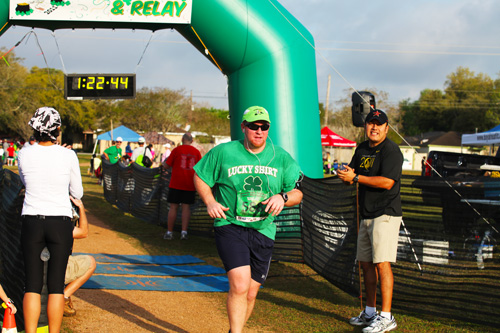Running and Friendly Links
Tim Noakes’ Ten Laws of Running Injuries, Law Two
4 Stages of Intrinsic Overuse Injuries Most Likely to Bench Runners


Tim Noakes is an MD and a running and fitness researcher. Thanks to his comprehensive work, thousands of runners have either avoided unnecessary injuries or had more rapid recoveries.
In his book “Lore of Running,” 4th edition, he lists his 10 laws of running injuries. This article covers number 2: Each Injury Progresses Through Four Grades. In this law, Noakes draws a distinction between extrinsic injuries and intrinsic running injuries. The extrinsic variety are those associated with sports like football, boxing, or hockey, where the athlete takes a severe enough whack to be sent ambling and tottering off to sign up for the disabled list.
What interests us here is what runners are more likely to endure; the intrinsic variety, which we commonly call the overuse injury.
Four Grades of Running Injuries
- Grade 1. This raises its ugly head when an injury occurs during a run, but the runner feels no pain or discomfort until hours have passed after the cool down.
An injury may be arrested at this stage in some cases, often by reducing mileage and using massages and some form of RICE (Rest, Ice, Compression, Elevation); you know the drill.
- Grade 2. This is where the injury has progressed to the point where the pain or discomfort is felt during the run, forcing a reduction in mileage.
Well, for some of us, anyway. Obviously, at this point some form of treatment is mandated and should be seriously considered, no matter how bullet-proof one might feel.
- Grade 3. At this point, the injury is really trying to get the runner’s attention. Training hurts and racing performance suffers. Please, no more speedwork; remember the admonition—“Pride Goeth Before the Fall.”
- Grade 4. At this point, no running is possible. Get thee to the doctor, ASAP.
Noakes points out that the only times that grade 2 and 3 are skipped are when the injury is either a stress fracture or ITB syndrome (Illiotibial Band Syndrome). Neither of these two afflictions are to be trifled with.
Armed with this knowledge, the moral is listen to your body, stretch regularly and often, eat properly, and be extremely proactive with even the most minor of aches.
This book is a must-own for runners of all levels and abilities. Go here to get your copy of the Lore of Running, 4th Edition
Check back; we will be posting the other laws soon! In the meantime, here are the ones we have posted:
- Tim Noakes’ Ten Laws of Running Injuries; Law One
- Tim Noakes’ Ten Laws of Running Injuries; Law Two
- Tim Noakes’ Ten Laws of Running Injuries; Law Three
- Tim Noakes’ Ten Laws of Running Injuries; Law Four
References:
- Tim Noakes, MD (1985). Lore of Running, Fourth Edition. South Africa: Oxford University Press
Recommended Related Articles
- Stress Fracture or Shin Splints?
- Specific Stretches Offer Relief for Runner’s Knee
- Is the Barefoot Running Trend Right for You?
- The Facts on Performance Enhancing Supplements Marketed to Runners
Website © 2013 KSmith Media, LLC; all rights reserved. Webmaster’s Google profile











